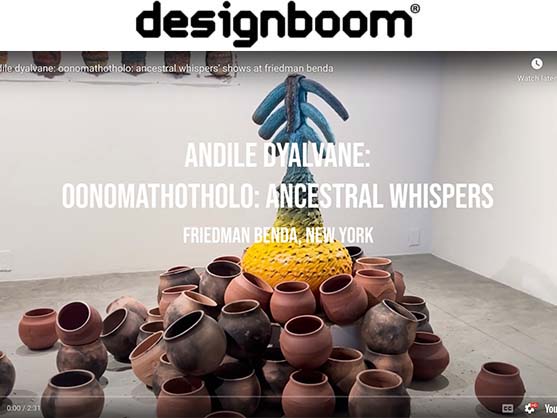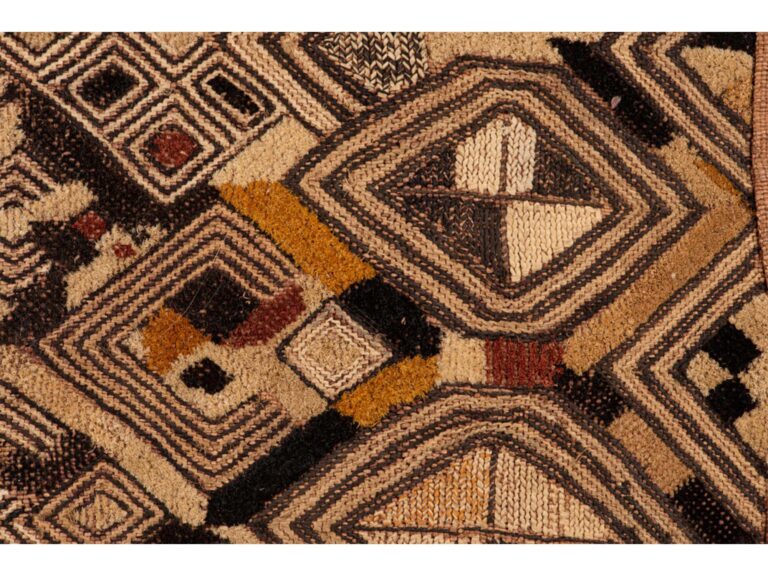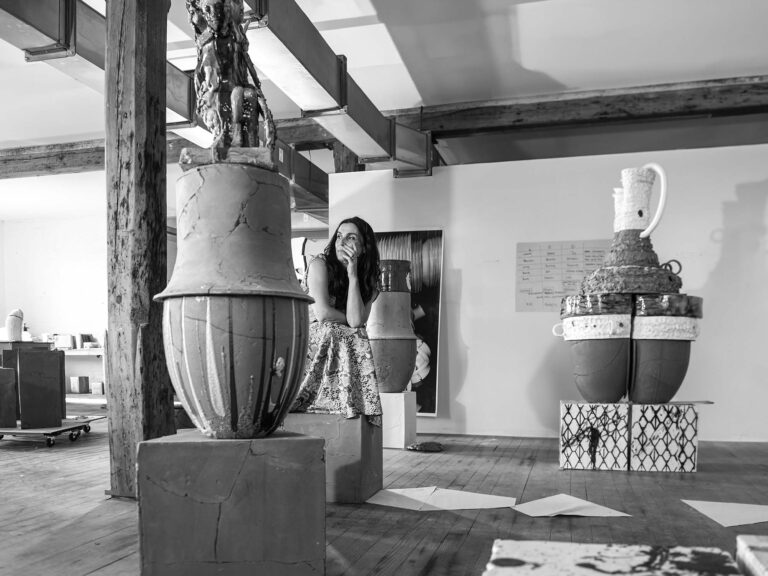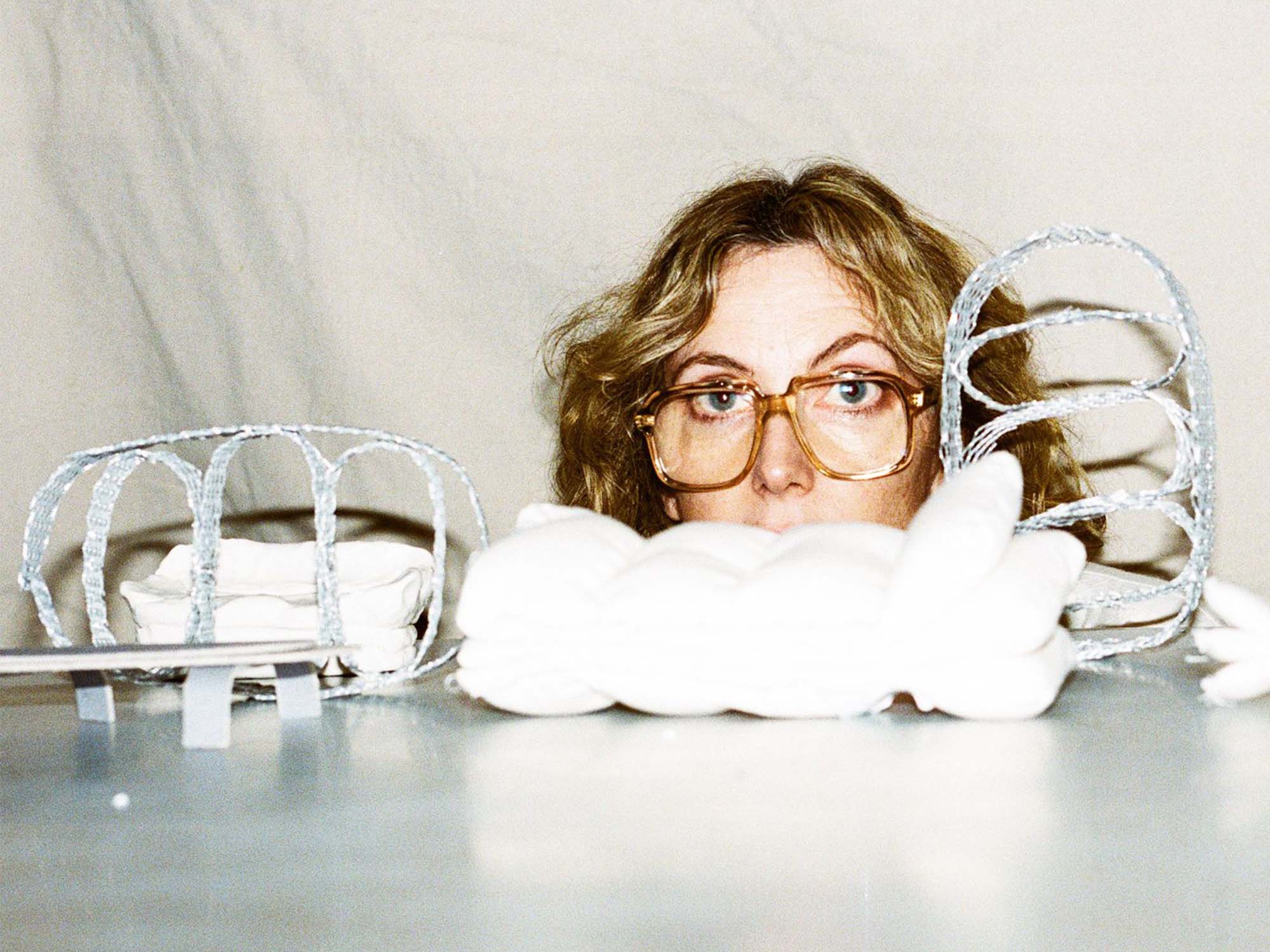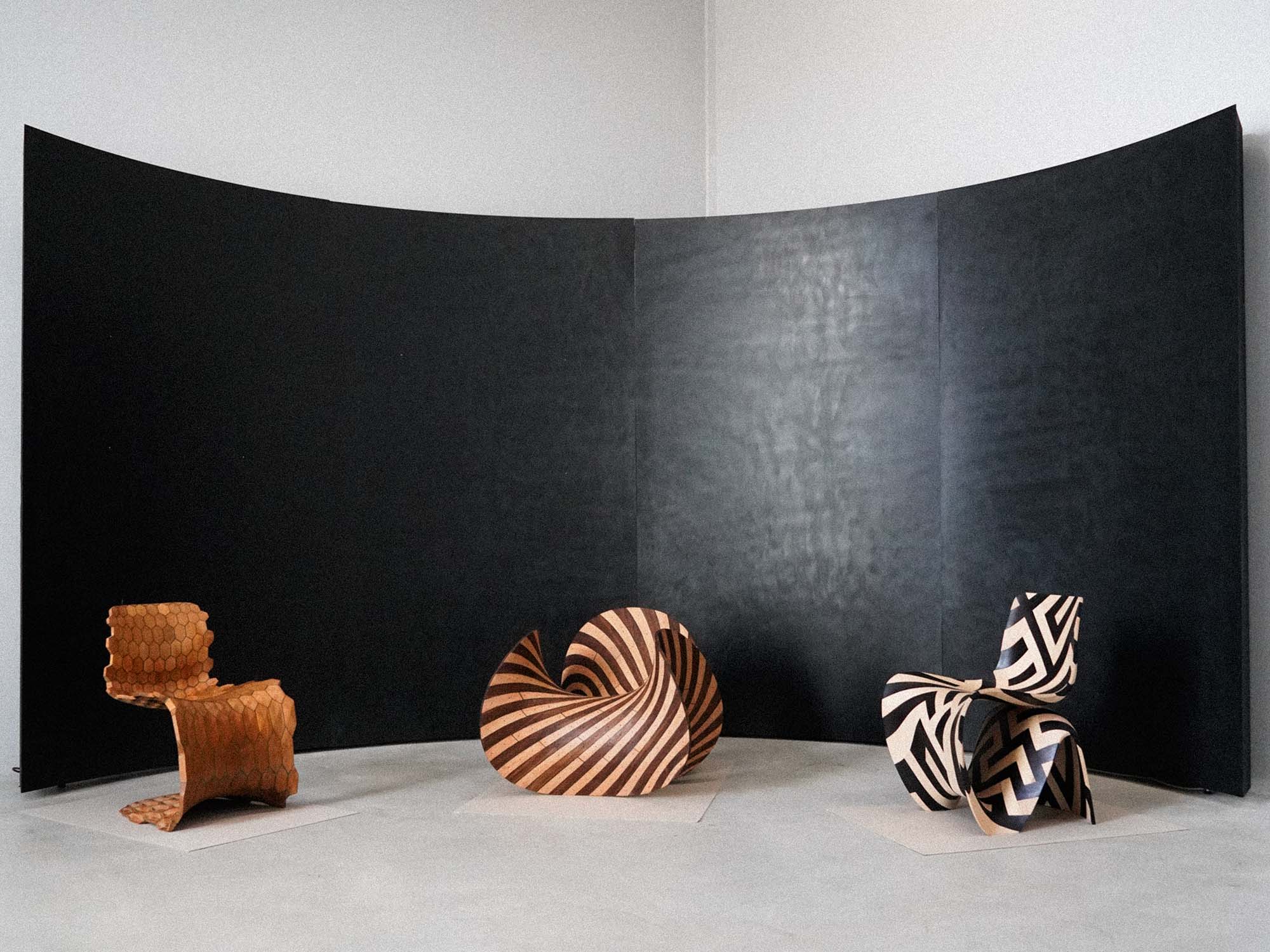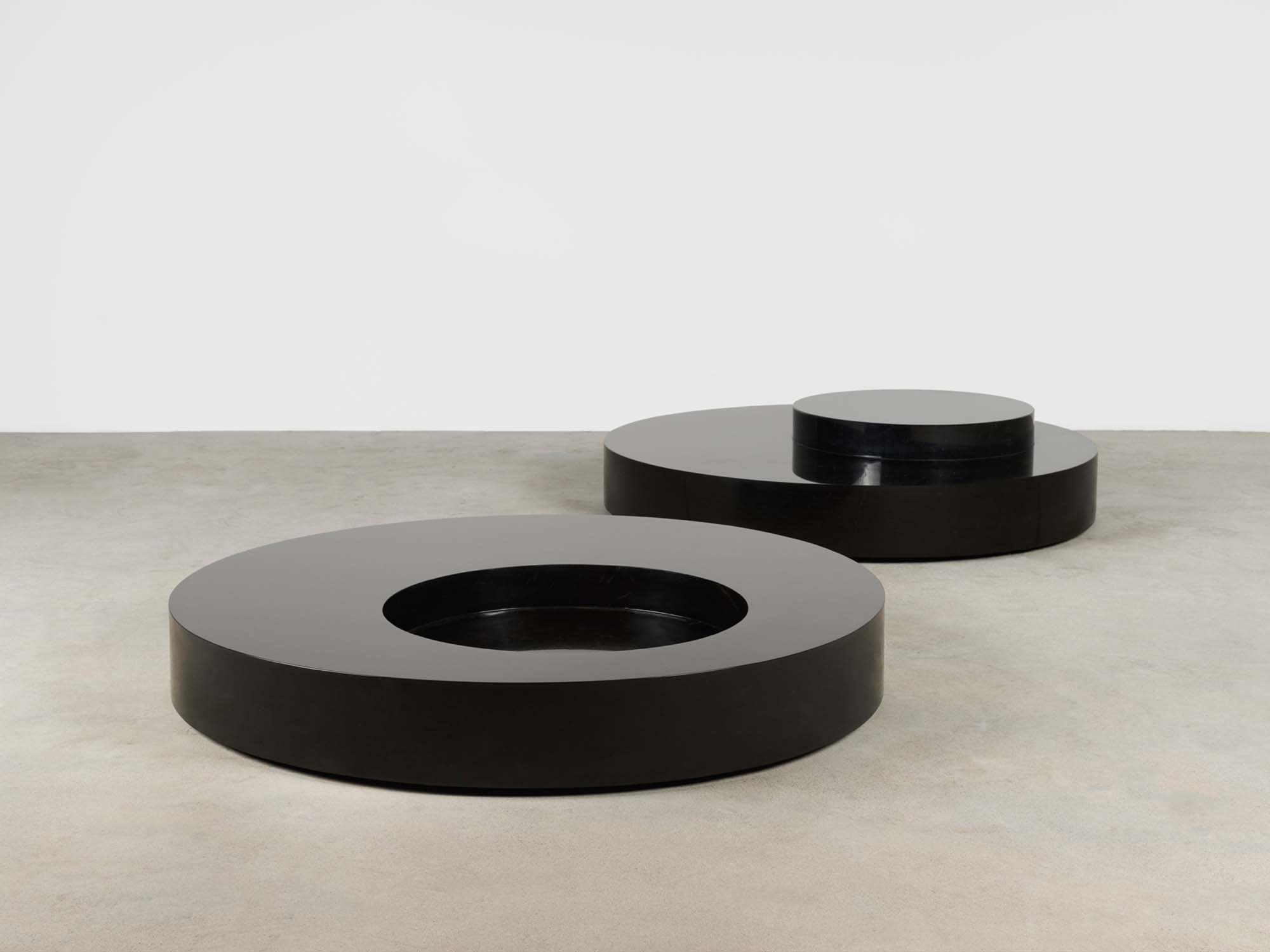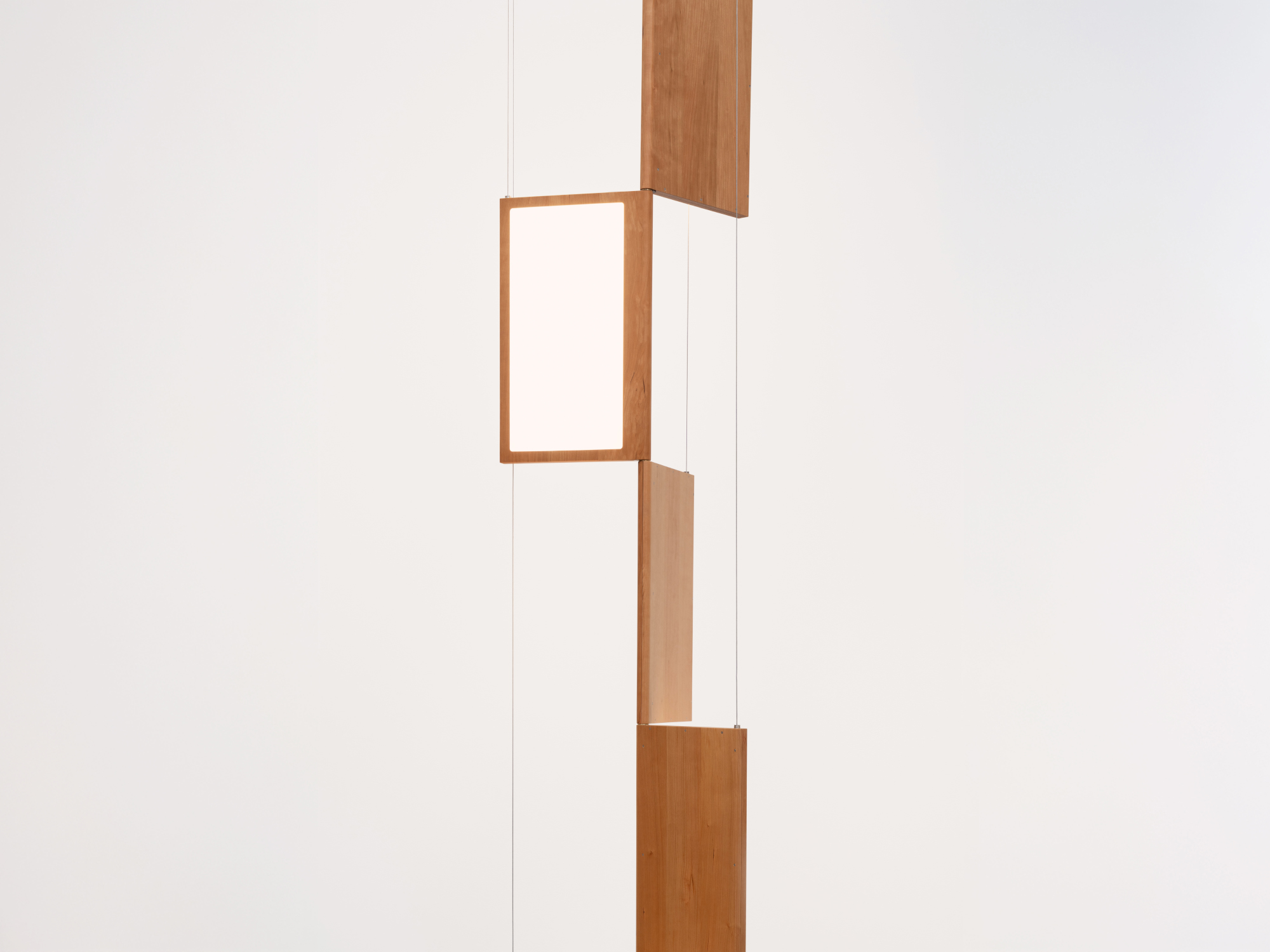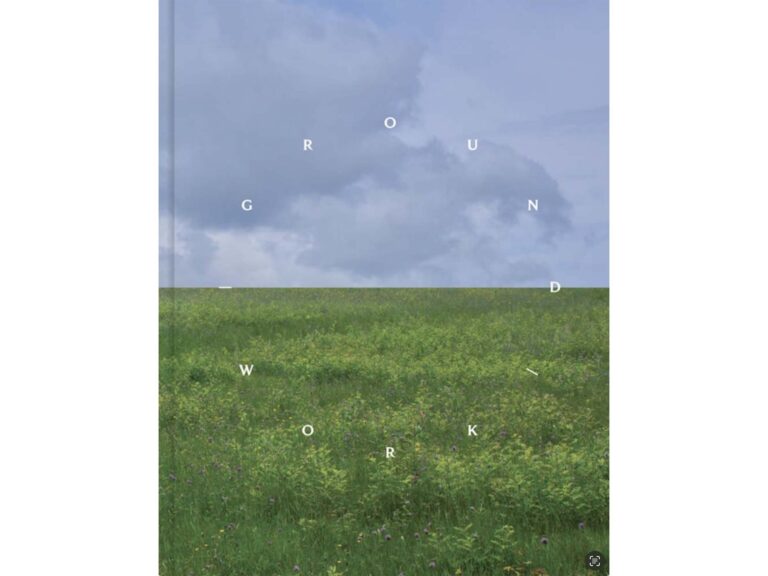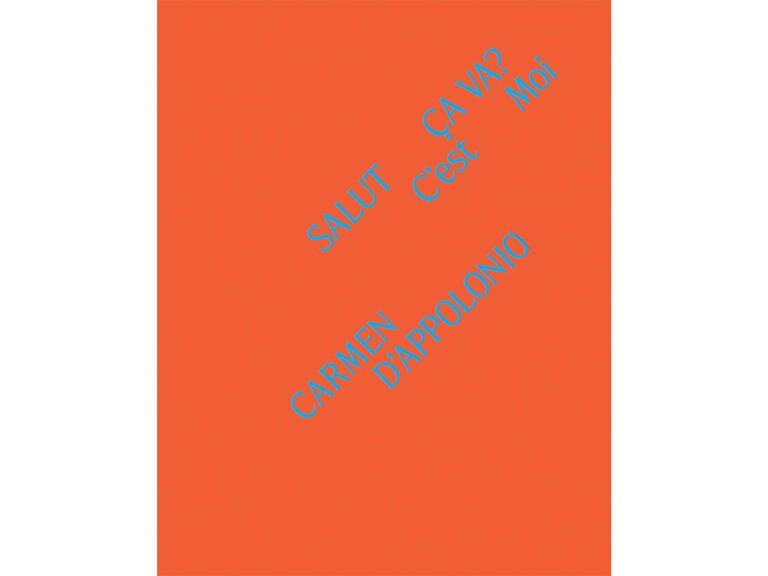By Kat Barandy
Marking Andile Dyalvane’s fourth exhibition at Friedman Benda, the New York gallery opened OoNomathotholo: Ancestral Whispers, the latest body of work by the South African artist. The work on view is a vibrant and textural collection of sculptural ceramic pieces, which express the artist’s journey from his early influences — especially from his Xhosa heritage — his processes, and his evolving form-finding techniques. The show’s title reflects the generational knowledge and experiences passed down through the Xhosa people of South Africa. Dyalvane’s work channels these legacies and communal histories, and intertwines them with contemporary narratives.
Alongside the ceramic works on view from September 5th — November 2nd, 2024 at Friedman Benda, the artist was joined by two of his artistic collaborators — one being his wife — who together held a ceremonial performance to celebrate the opening of the exhibition. designboom was in attendance to experience their song, and to hear the artist describe the collection in his own words.
ANDILE DYALVANE IS DRIVEN BY A CONNECTION TO THE EARTH
Commonly regarded as one of South Africa’s premier ceramic artists, Andile Dyalvane is also known as a healer and spiritual leader. His work, showcased in New York by Friedman Benda, is drawn from his upbringing in the small village of Ngobozana. Located near Qobo-Qobo in South Africa’s Eastern Cape, this village is where he was immersed in the traditions of his Xhosa heritage. Here, he developed a deep connection to the land at an early age while learning to farm and tend cattle — a relationship that resonates throughout his work today. Clay, which the artist sometimes refers to as umhlaba (mother earth), is central to his practice and reflects this long-lasting connection to the soil and the land.
‘As a child coming from the countryside, we had livestock which connected us with the forest and the river. Clay was a medium that we used to play games. When we reached a certain age, or milestone, the elders of the community were tasked with guiding our nature to see what we were called to do,’ the artist explains at the show’s opening at Friedman Benda’s New York gallery. ‘One day I went to the city and studied art. Ceramics was one of the subjects that I was drawn to because it reminded me of where I came from. In our language, we recognize ‘objects of ritual,’ while exposure to Western education can provide tools that can uplift the gifts that we have. For me, clay was one of those objects.’
SCARS AND INTENTIONAL IMPERFECTIONS
The exhibition at Friedman Benda, OoNomathotholo: Ancestral Whispers, features a series of large, sculptural vessels which Andile Dyalvane created over a two-year period. Imperfect forms and textures symbolize both a connection to the land and themes of grief and resilience.
The scarred and collapsing surfaces of Dyalvane’s pieces express his influences from the natural world, especially the river gullies and cliffs of his home — the very clay he uses is sourced from rivers near his birthplace. With so-called ‘happy accidents,’ the vessels are intentionally collapsed in a way that mimics the rough crevices and valleys of the terrain. Meanwhile, deep cuts and incisions along the surfaces evoke the Xhosa practice of scarification, a visual reminder of his heritage. This way, both the vessel and the clay itself become a direct connection to the earth, communicating the ‘whispers of his ancestors,’ the show’s namesake.
Dyalvane elaborates on the first ‘happy accident’ to inform his workflow: ‘The very first piece I made that collapsed was intended at first to be perfect, like a beautiful form. While I was working, I was listening to certain sounds that have a frequency which helps me to realize the messages or the objects. At this time, I was in a very old studio with a wooden floor.
‘As I was dancing to the sounds, the piece behind me started to sway and then it collapsed. It was so beautiful. Those days I was paying homage to my childhood playground, which was the crevices of the river Donga, which has this kind of effect. When that happened, I thought: ‘Wow! Thank you Universe, thank you Spirit.’ It was a collaboration between the medium, time, and gravity.’
FRIEDMAN BENDA EXHIBITS THE ARTIST’S EVOLUTION
As two years of work are showcased all together, viewers can detect the artist’s gradually changing style and processes. A pile of humble, charred clay pots, ‘x 60 Pots,’ is clustered around a vibrantly colored, sculptural totem, ‘Ixhanti.’ An array of larger vessels in similar vibrant hues is arranged in a circle at the center of the gallery, while four early vessels stand before the window, expressing the more neutral tones which are characteristic of the clay itself. Over the course of his process, Dyalvane introduced the vibrant color palette to evoke the wildflowers and scorched earth of his homeland, along with the sparkling blue waters that he had come to know throughout his travels.
Dyalvane recounts the introduction of blue throughout his newer works: ‘When I was in St. Ives (at a residency at Leach Pottery in Cornwall, UK), what tends to happen when I work — either during a residency, in my studio, or wherever I am — is that I reflect what I see. I saw the landscape, the water, and the beautiful country. I took many walks. As I was exploring, I didn’t know my intention, but I was drawn to places that centered on water. I noticed that the fluidity of water is similar to fluidity of clay. When you are able to move the clay, it consists of much more water. I was drawn to this blue because it was reflective of what I was processing and seeing at the time.’
WORKING THROUGH PERSONAL GRIEF
Many of the works on view at Friedman Benda emerged during the pandemic, a time of personal loss for the artist and collective loss across the world. While the pieces are infused with themes of trauma and grief, they aim to offer a path toward harmony and renewal. The ‘happy accidents’ of intentional collapse symbolize moments of loss, but also points of strength and renewal, embodying personal mourning.
The artist continues, describing how his process evolved as he began to experiment with clay, creating imperfections, and working through grief: ‘There was something to draw from that first moment of collapse. After that, I began to create an intentional accident — and that’s not possible. I had to collapse the pieces intentionally. This was during the pandemic, when I lost two brothers. I used clay as a tool to heal, and to interrogate and process the emotions I was having. That’s where I started making this object. The way that I was tearing them and moving them, it was me expressing the grief that I was feeling. So intentionally, I had them cracked at the bottom.’
RECONNECTING WITH HERITAGE THROUGH CLAY
It was not just grief from the loss of his brothers which drove his work. One of the key themes across OoNomathotholo: Ancestral Whispers is the disconnection from ancestral lands. The sculptural vessels, with their rich textures and vibrant color palettes, trace their origins to a modest clay pot — a traditional artifact of the artist’s homeland which stores memories and tradition for his displaced family and his neighbors.
He explains the origin of his ceramic works, and the spirit of reconnecting with his heritage: ‘About fifteen years ago, I made a clay pot. As a student, I was orientated in making functional objects — clay pots, bowls, cups, things that you can use. One of the objects was a ceremonial clay pot that was used for drinking traditional beer or storing grain. In 1964 when my parents and my eldest brother were forcefully moved, their homes and the artifacts inside were destroyed and looted. I grew up seeing none of the artifacts, ‘objects of ritual,’ that my great grandparents used to use.
‘I chose to take this used clay pot from Cape Town, a twelve-hour drive from my village, and offered it to my retired father. He was so emotional. He cried because it reminded him of all the time that had been lost and ceremonies suppressed. This brought such emotion by reminding him of those times. After that, he called the whole village. He said: ‘After forty-five years, no one has used these objects.
‘Once they were all together, they remembered. They remembered the souls, the sounds, and the ancient smells of their parents’ ways of being. And so this was something that sparked that memory from them. In 2020 we made about one hundred of these clay pots, because the village has about one hundred homes. We gifted one for each home as a way of igniting that memory.’
